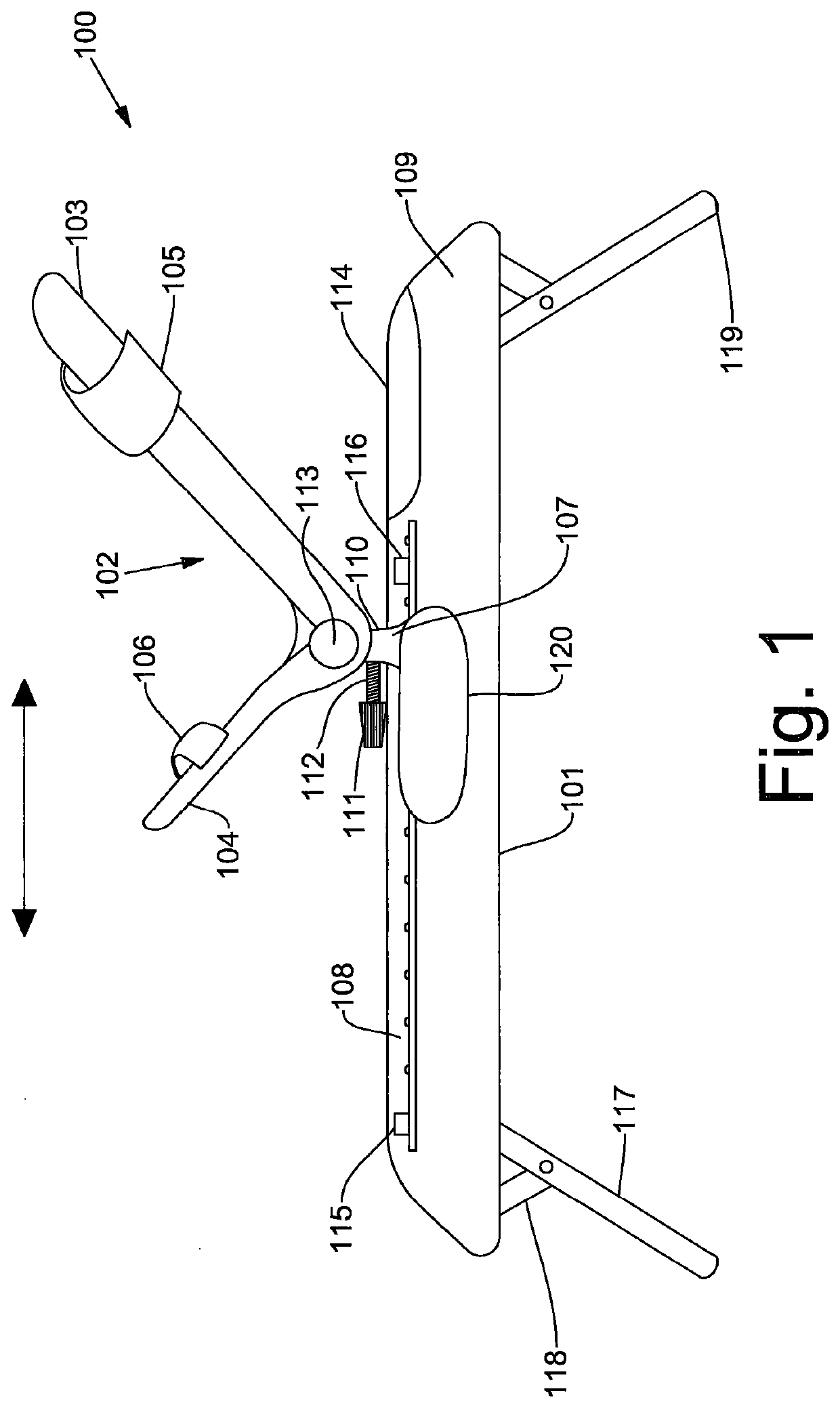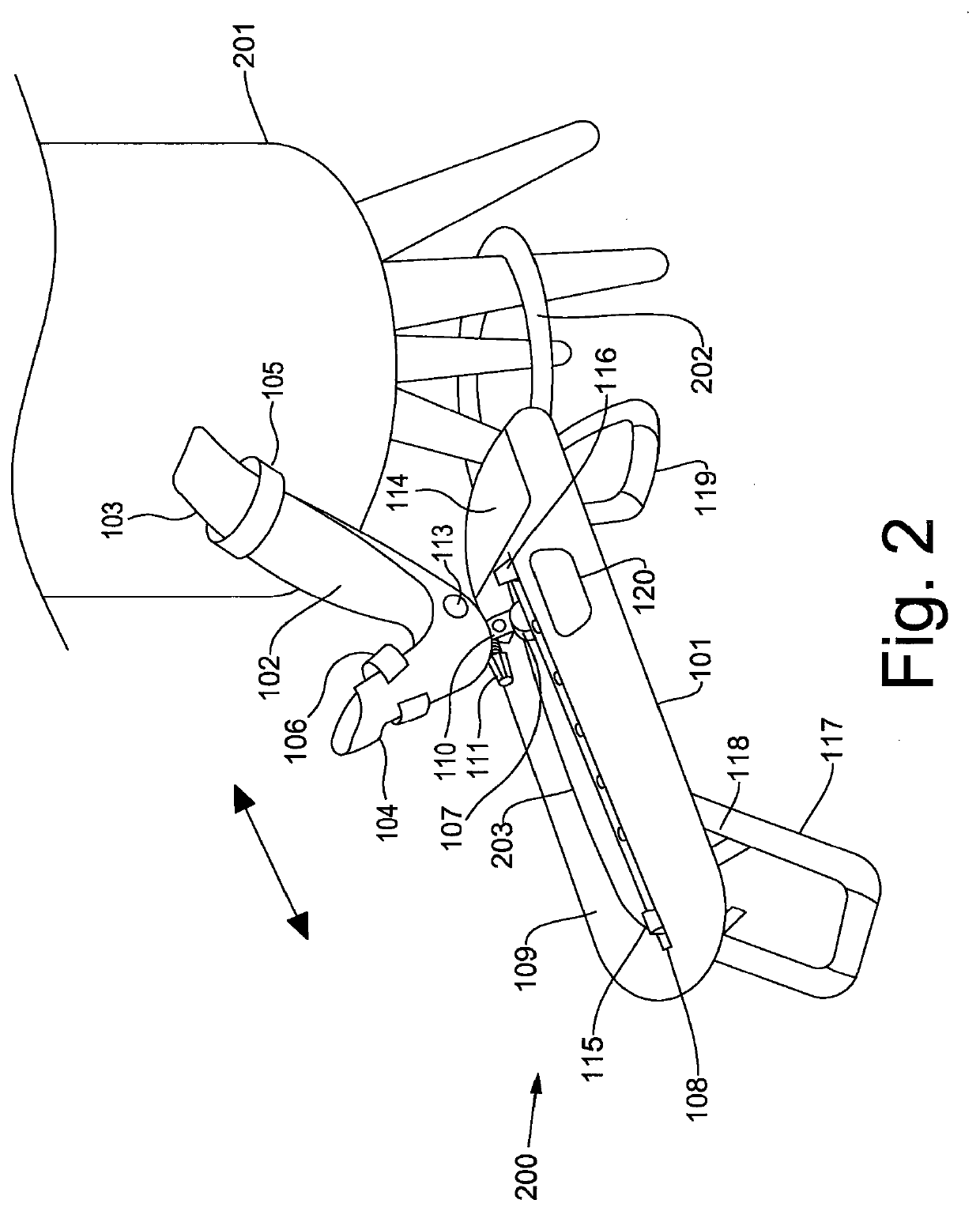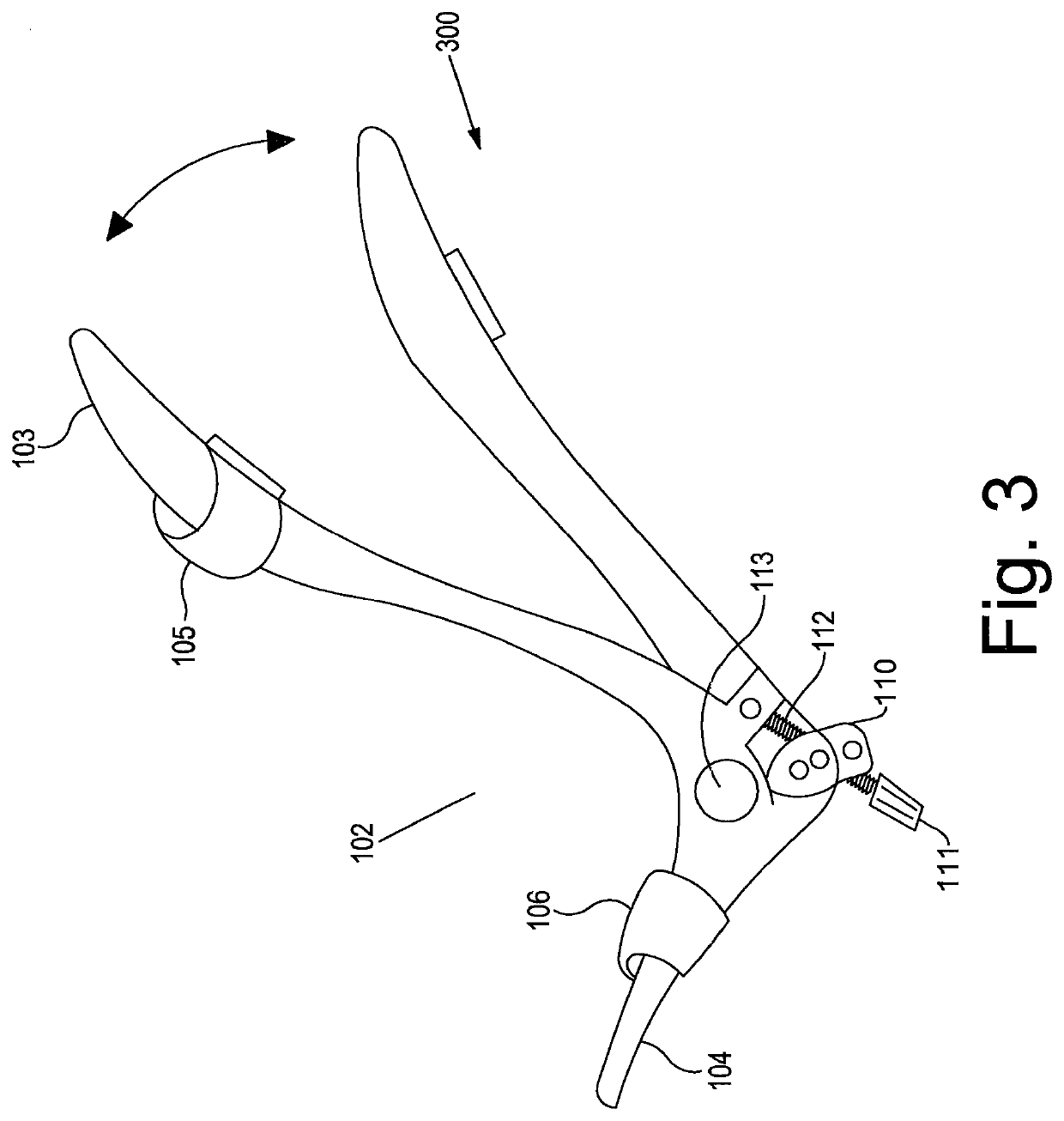Portable therapeutic strengthening apparatus using adjustable resistance
a technology of adjustable resistance and therapeutic strengthening, which is applied in the direction of resistance force resistors, sport apparatus, gymnastics exercise, etc., can solve the problems of life changing effects, significant and rapid reduction of muscle strength, deconditioning effect, etc., and achieve optimal transportation and portability, easy wipe down of the machine, and convenient portability
- Summary
- Abstract
- Description
- Claims
- Application Information
AI Technical Summary
Benefits of technology
Problems solved by technology
Method used
Image
Examples
first embodiment
[0107]Referring to FIG. 1 herein there is shown a side view of the device 100 according to the present invention for use by a seated user to work the quadriceps muscles. The device comprises an elongate body 101 having a leg rest 102 comprising a calf support 103 and foot support 104. Straps 105 and 106 are applied around the calf and the foot respectively to fasten a user's leg to the device. The leg rest 102 is attached to a trolley 107 mounted on a friction-free longitudinal rail 108 which runs the predominant length of the elongate body 101, such that the trolley can move forward and backward along said longitudinal rail 108 in the direction of the arrow. Moving the trolley 107 longitudinally forward is against the resistance of the resistance cords described in FIG. 4.
[0108]The friction-free rail is affixed inside the device under a wipeable external cover 109. Attachment of the leg rest 102 to the friction-fee rail 108 mounted within the elongate body 101 is via pivot joint 11...
second embodiment
[0121]Referring to FIG. 7 herein there is shown a perspective view of the apparatus of the present invention. The apparatus 700 comprises an elongate body 701 having first 702 and second 703 ends. The apparatus is mounted on a pair of legs 704 in adjustable attachment to the body of the device 701 about pivot points 705. The legs have rubber stoppers 706 or rubber feet to increase friction between the apparatus and the device on which it is placed to prevent the apparatus from slipping. The legs may further comprise joining clips 707 which permit two individual apparatus 700 to be joined together or may assist in joining the device to an anchor point for stability e.g. a chair. The legs are foldable beneath the device so that it can be used folded flat for storage.
[0122]The upper surface of the elongate body 701 is a molded plastic shell of polyurethane or an aluminium extrusion 708 over which a nylon slide plate or trolley 709 is located. The nylon slide plate 709 provides a pivota...
third embodiment
[0139]Referring to FIG. 17 herein there is shown a perspective view of the apparatus in accordance with the present invention. The apparatus 1700 comprises an elongate body 1701 having first 1702 and second 1703 ends. The apparatus is mounted on a pair of legs 1704 in adjustable attachment to the body of the device 1701 about pivot points 1705. The legs have stoppers or feet 1706 made from a thermoplastic elastomer (TPE) plastic to increase friction between the apparatus and the device on which it is placed to prevent the apparatus from slipping. The legs may further comprise joining clips 1707 which permit two individual apparatus 1700 to be joined together or may assist in joining the device to an anchor point for stability e.g. a chair. The legs are foldable beneath the device so that it can be used folded flat for storage.
[0140]The upper surface of the elongate body 1701 is an aluminium extruded body 1708 over which an aluminium slide plate or trolley 1709 is located. The alumin...
PUM
 Login to View More
Login to View More Abstract
Description
Claims
Application Information
 Login to View More
Login to View More - R&D
- Intellectual Property
- Life Sciences
- Materials
- Tech Scout
- Unparalleled Data Quality
- Higher Quality Content
- 60% Fewer Hallucinations
Browse by: Latest US Patents, China's latest patents, Technical Efficacy Thesaurus, Application Domain, Technology Topic, Popular Technical Reports.
© 2025 PatSnap. All rights reserved.Legal|Privacy policy|Modern Slavery Act Transparency Statement|Sitemap|About US| Contact US: help@patsnap.com



